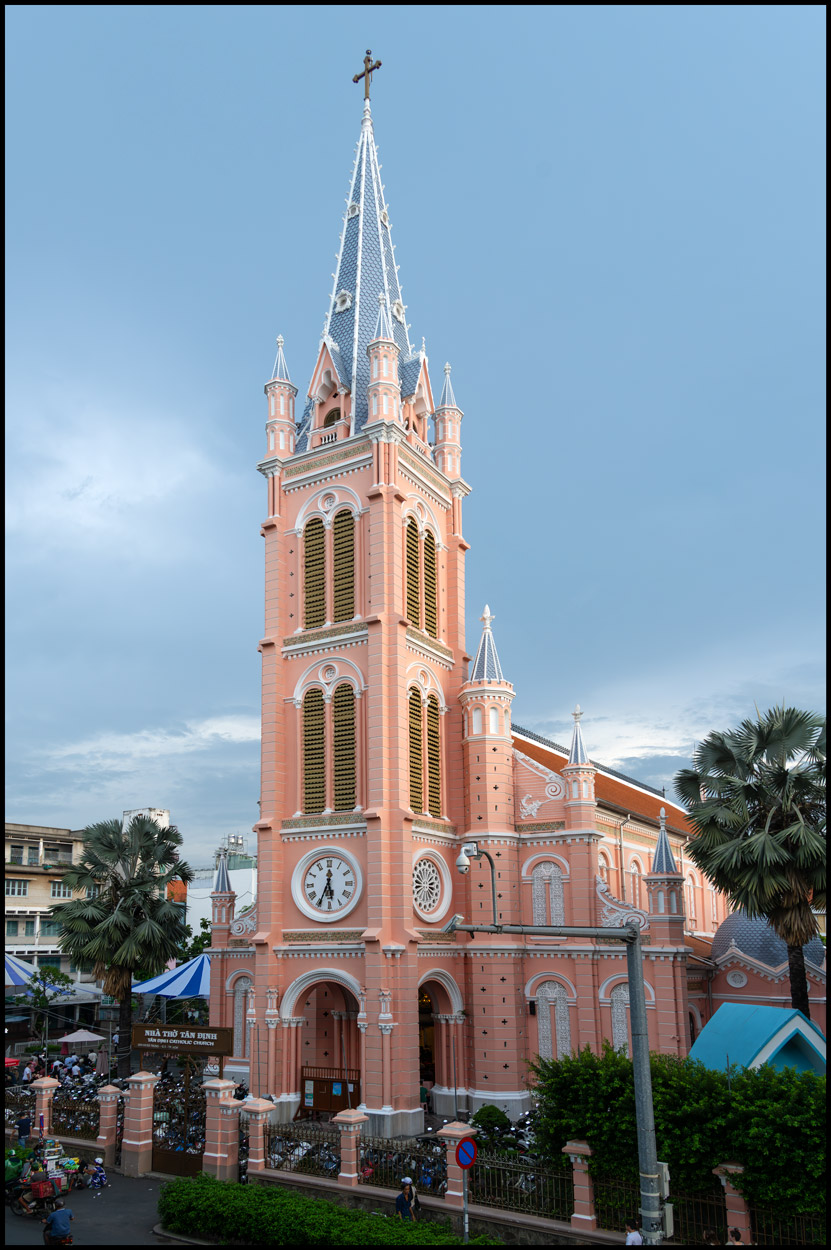
The Tan Dinh Church (Nhà thờ Tân Định) is a Saigon landmark located along Hai Ba Trung, as that street runs through downtown, making its way from the Kieu Bridge to the Saigon River. The Roman Catholic church was built by the French and completed in 1876 at a time when Vietnam was divided into three colonies, all part of French Indochina. Today, it belongs to the Archdiocese of Ho Chi Minh City.
The church was painted pink in 1957, or so Wikipedia tells us. Although Tan Dinh Church is surely the best known pink church in the country, the nickname could also be applied to the Catholic cathedral in Da Nang, which was also painted the same shade of pink at some point. I have no idea where this color scheme comes from. I cannot recall seeing any pink Catholic churches elsewhere in the world.
This photo was taken in June of 2025. I’ve made several passes at Tan Dinh Church during various visits to Saigon, and this is the first image I am happy with. I’m shooting from the second floor patio of a coffee shop across the street, and as the clock on the church notes, it is just past 5:30 on an early summer afternoon. The sun is behind some thin clouds near the horizon; while there is plenty of light available, it is diffused and softened by the clouds in a way that matches up nicely with the pastel palette of the church. As always, the sensor on the mirrorless Nikon Z7 II does an admirable job of capturing the scene.









